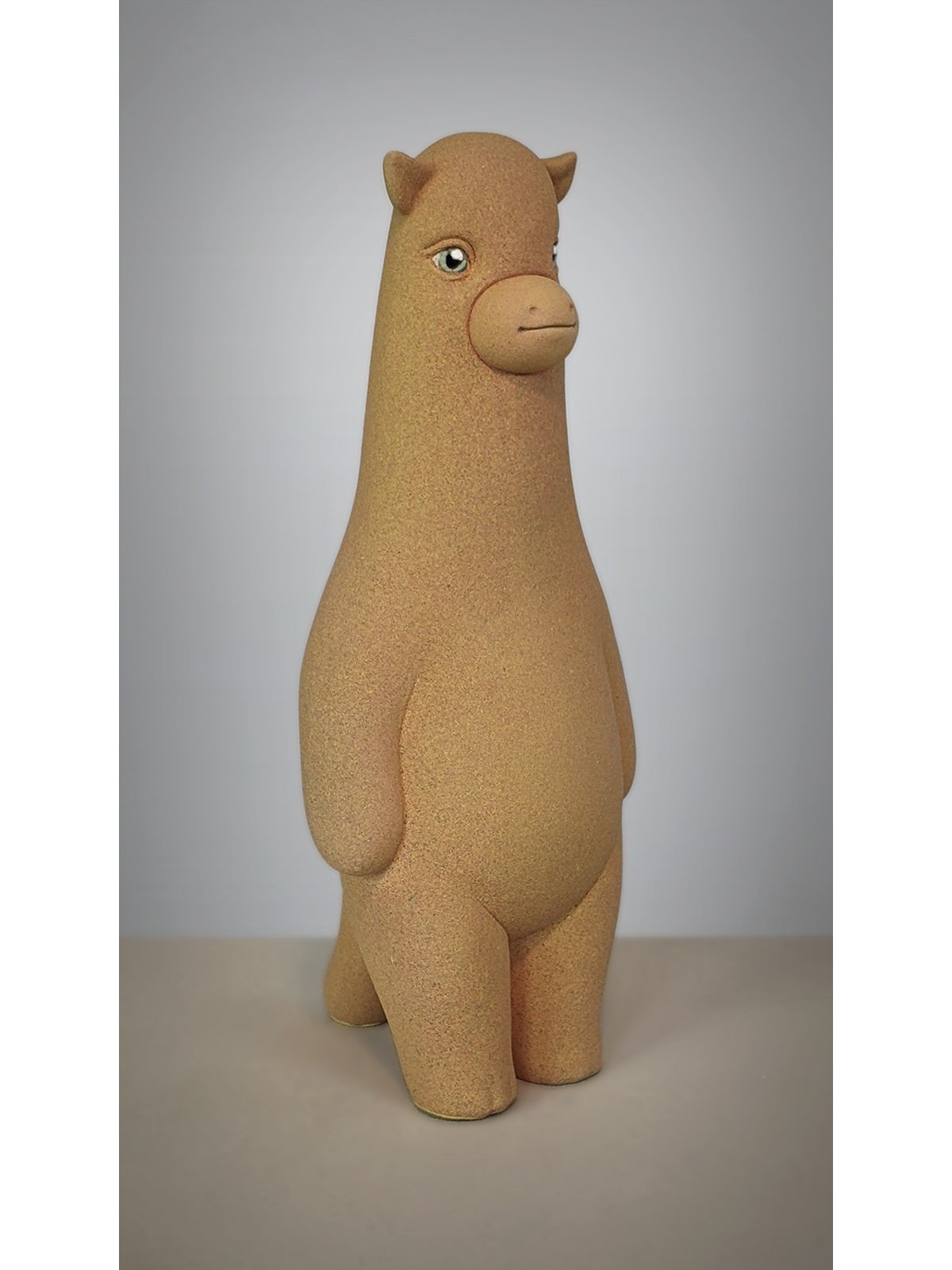Technical Information & Care Instructions for Honeys
Although Honeys are made of porcelain, they are not fired to full vitrification (glassiness) nor do they have a glaze layer over their body pigments.
The reasons for this are several: Having tested many different surfacing options and firing temperatures, I found that I greatly prefer both the tone and depth of the colors, and the visual “softness” of the surface texture at the lower temperatures (they’re not really soft at all, of course, but they look soft). When fired to full vitrification, the surfaces seemed too hard and glassy and the colors too dark and saturated. (The reason I don’t do an all-over glaze on almost any of my work is because glaze adds sufficient thickness to the surface to negatively impact the clarity of the sculptural details.)
As a result of these formal choices, however, a Honey’s body is still porous and can pick up oil and dirt if handled indelicately. Clean hands are fine, but greasy or dirty hands are not.
Honeys can get wet (they will darken, then return to normal as they dry), so if they do get a little dirt on them, you can wipe them down with clean water or even lightly rinse them. I wouldn’t recommend saturating them completely on a regular basis, however, as over time they might absorb enough minerals from the water to discolor (like an old terracotta pot).
Honeys are sturdy, but can chip if knocked against hard surfaces.



